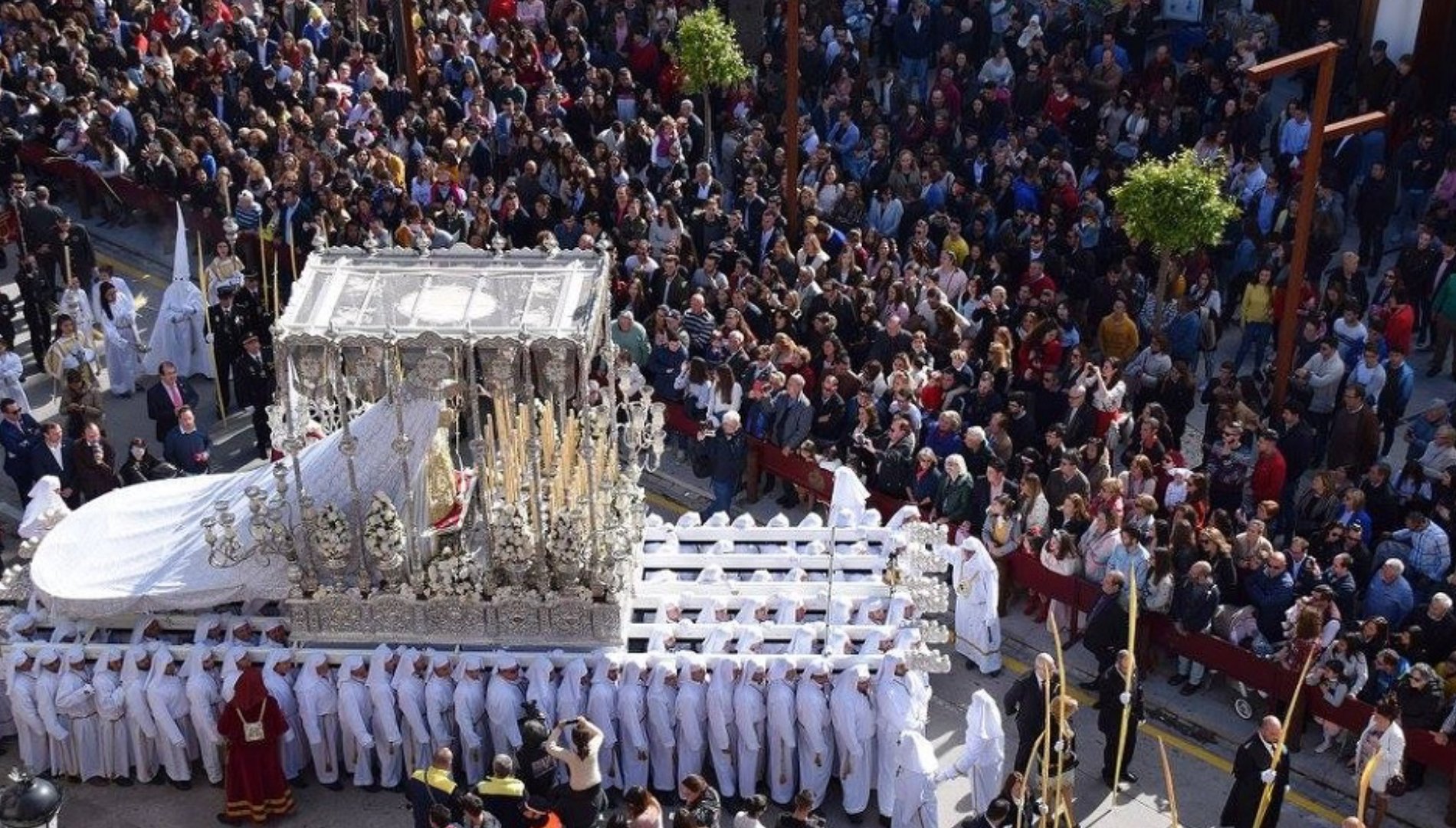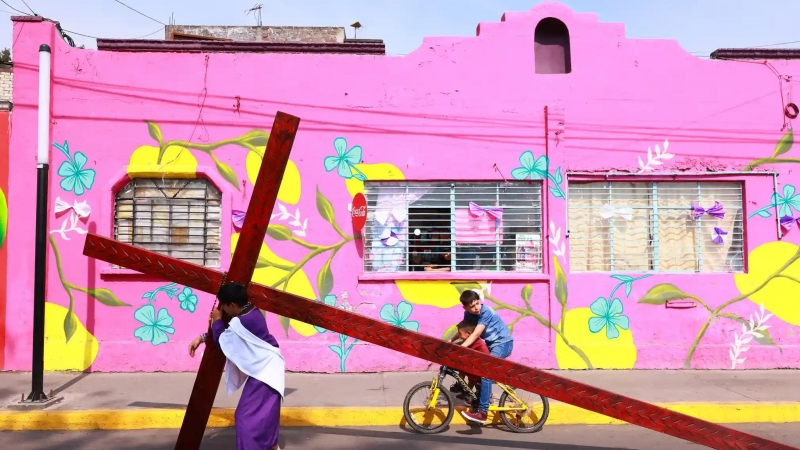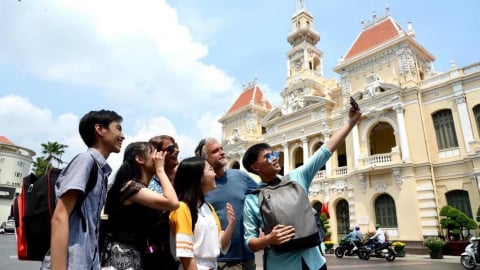With a history spanning hundreds of years, Holy Week (Semana Santa), or Easter Week, has become an integral part of the cultural and religious life of many cities across Spain. From Palm Sunday, the day marking Jesus' entry into Jerusalem before his crucifixion, to Easter Sunday, the day commemorating his miraculous resurrection after being crucified and dying on the cross, during this solemn week, cities such as Sevilla, Valladolid, Zamora, Cuenca, Málaga... are immersed in the atmosphere of meaningful processions.
The most special and impressive feature of these processions is the massive size and elaborate decoration of the palanquins. For the most part, each palanquin is a true work of art, with a gigantic size, requiring dozens, even hundreds of people to work together to carry it. The surface of the palanquin is meticulously carved, lavishly decorated with fresh flowers, candles and exquisite gold and silver plated details.

Tourists flock to several regions in Spain to take part in giant processions during the week before Easter.
On these palanquins, people placed life-sized statues, realistically and movingly recreating important scenes and events in the Bible about the journey of Jesus' suffering, or depicting the ultimate pain of the Virgin Mary when witnessing her Son being executed on the cross. These sculptures not only have high artistic value but also evoke compassion and deep contemplation in the hearts of viewers.
The pallbearers, known as “costaleros” or “hermanos,” typically wear special head-to-toe costumes known as “penitential” (nazareno) cloaks. These include a tunic, a headscarf, and a tall, conical hood that completely obscures the wearer’s face.
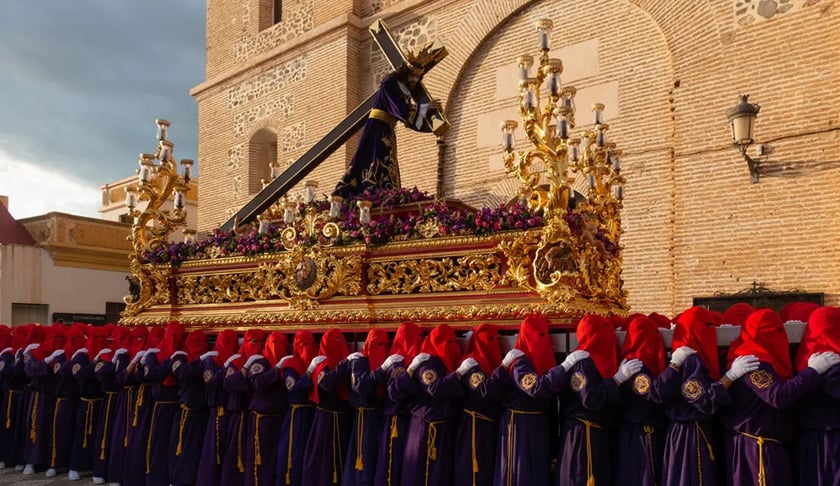
The tradition of giant processions during Holy Week or Easter Week in Spain
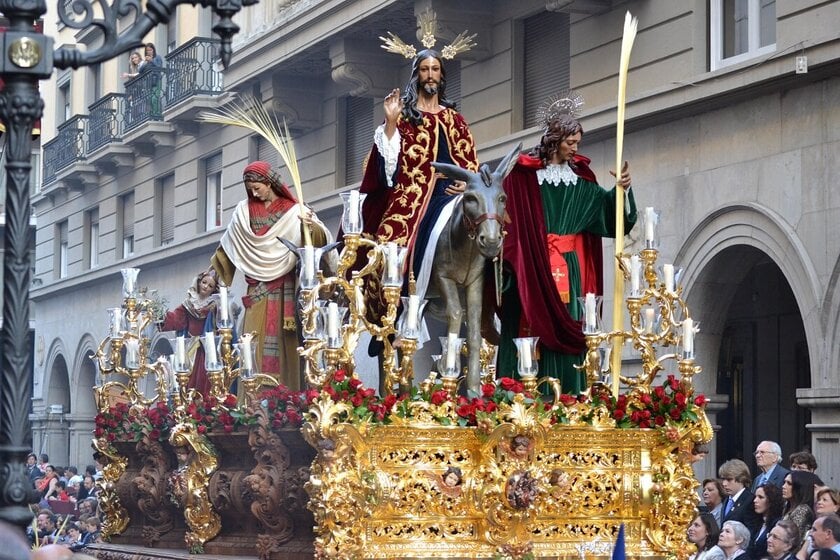
The color of these penitential robes often follows the main color of the palanquin they carry, creating a uniform and solemn look, which can be black symbolizing mourning, purple of repentance, green of hope or white of purity. The act of wearing penitential robes is seen as a way for participants to express repentance and sympathy for the sufferings that Jesus went through to wash away the sins of humanity. Some processions even require palanquin bearers to go barefoot or wear chains and shackles on their ankles to show their sincerity and atonement, creating a very emotional image.
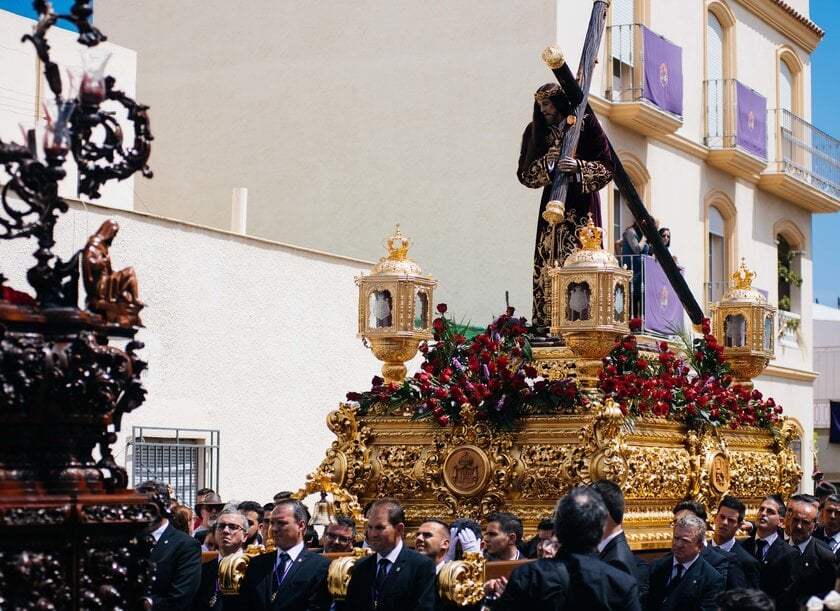
The statues are placed on life-sized palanquins, depicting scenes and events from the Bible about Jesus' journey to his death.
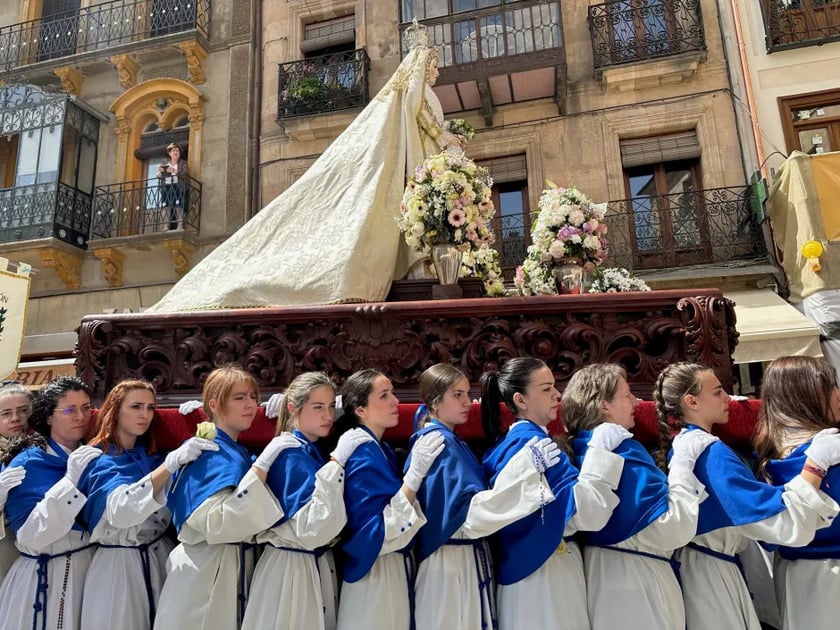
These solemn and meaningful processions attract the participation of thousands of locals and international tourists. As the processions move slowly through the narrow alleys, they create a unique and impressive cultural scene, especially in some regions of Spain every Easter.
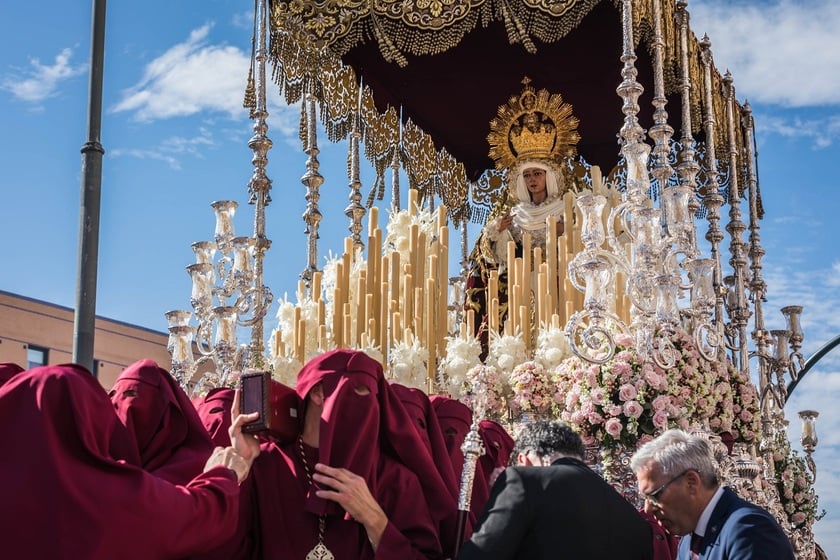
Most of the palanquins are huge and carried by dozens or even hundreds of people. The palanquins are elaborately decorated.
Among them, the processions held in the city of Málaga, the capital of the Málaga province of the same name, are often considered the most famous and magnificent in the country. The floats in Málaga are significantly larger than those in other places, some can weigh more than 5 tons and need hundreds of strong people to carry them together. The massiveness and splendor of these floats only adds to the awe and respect of the spectators.

The processions attract the participation of thousands of locals and tourists passing through the small alleys, creating a unique scene in some regions of Spain.
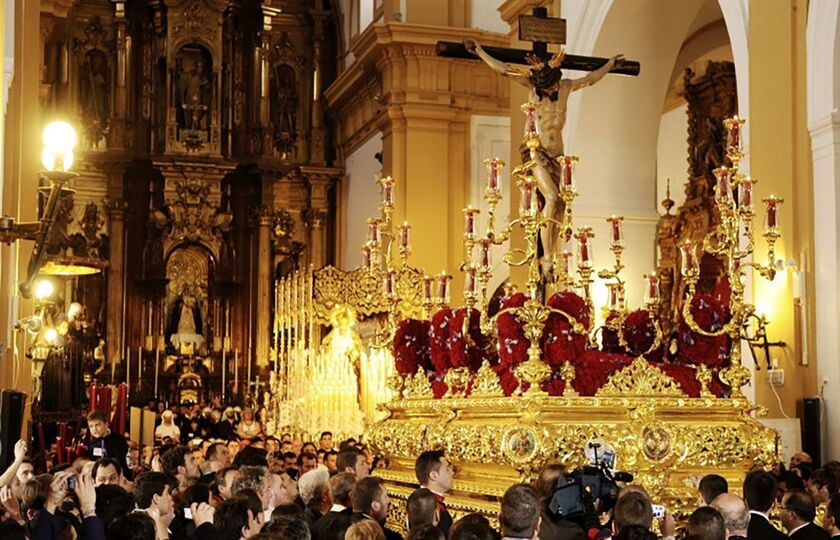
According to estimates by Spain's Minister of Industry and Tourism, Jordi Hereu, around 15 million tourists are expected to visit the country in March and April 2025, coinciding with the Easter season, marking an impressive 9% increase compared to the same period last year. He also predicted that total tourist spending in Spain during this period will increase by 13% compared to 2024, reaching an estimated record of 20 billion euros, showing the strong attraction of cultural and religious events to the tourism industry.

This is an opportunity for Spain to attract more tourists to visit.
However, in addition to the positive signals, hoteliers in Spain are also expressing concern about the possibility of many tourists canceling their bookings due to the weather forecast that there may be rain on Easter Sunday 2025, which falls on April 20, later than previous years and coincides with the start of the peak tourist season.
Notably, the processions during Holy Week in 2025 in Málaga are expected to continue to be a highlight, attracting a "huge" number of tourists to the city. According to statistics from local authorities, the religious events and activities during Holy Week in 2024 alone will contribute significantly to the Spanish economy, bringing in about 39.7 million euros to the city of Málaga, showing the great economic importance of this unique cultural tradition.





